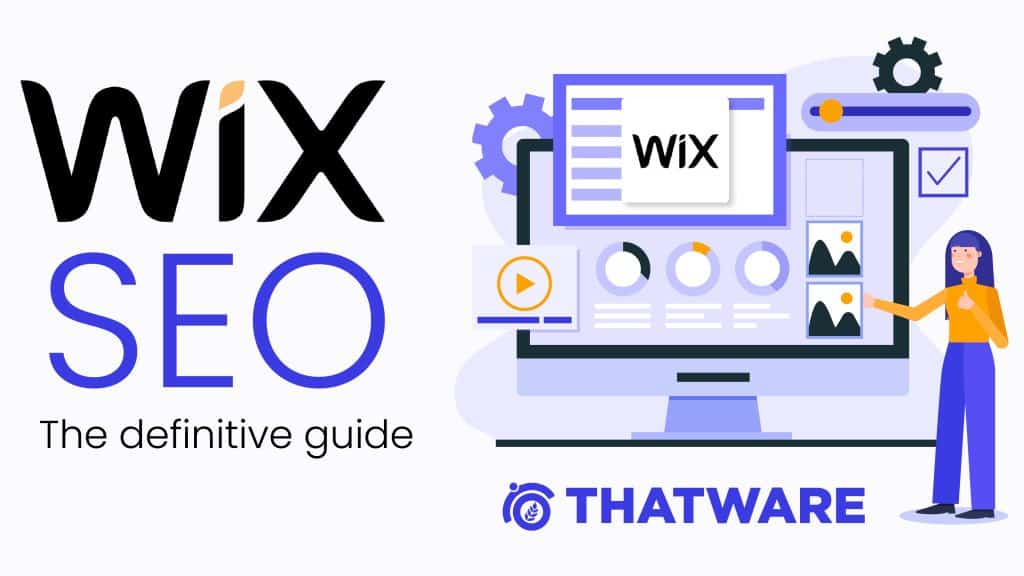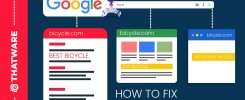SUPERCHARGE YOUR ONLINE VISIBILITY! CONTACT US AND LET’S ACHIEVE EXCELLENCE TOGETHER!
Wix SEO has evolved significantly, becoming a powerful tool for optimizing websites and improving search engine rankings. This guide provides an in-depth understanding of Wix SEO, offering actionable tips and strategies to maximize its potential.
Too many articles, in our opinion, have lengthy beginnings that are mostly fluff. For your sake, we’d rather get right to the point! We’ll begin with an overview – Wix SEO Fundamentals. Because content marketing is such a broad topic, it has the most sections.

Key Features of Wix SEO
1. User-Friendly SEO Wiz
The Wix SEO Wiz acts as a personalized checklist for your website’s optimization goals. It generates step-by-step tasks tailored to your site’s needs, helping you achieve better rankings efficiently. Beginners find it particularly helpful for covering essential SEO basics.
2. Structured Data & Schema Markup
Wix enables structured data implementation through its user-friendly interface, improving search engine understanding of your site’s content. Hence, adding schema markup makes your website eligible for rich results, enhancing visibility in search results.
3. Mobile Optimization
Search engines prioritize mobile-friendly websites, and Wix ensures your site is fully optimized for mobile devices. It automatically adjusts layouts and elements to fit smaller screens without sacrificing functionality or design.
4. SEO-Friendly URLs
With Wix, creating custom URLs becomes effortless, enabling better keyword integration and improved click-through rates. Clean, descriptive URLs enhance user experience and contribute to higher rankings.
5. Integrations with Google Tools
Wix seamlessly integrates with tools like Google Analytics and Search Console, providing valuable insights into your site’s performance. Therefore, this integration simplifies tracking metrics like organic traffic, bounce rates, and keyword performance.
Why Wix Is Ideal for SEO Beginners?
Wix’s intuitive interface eliminates much of the complexity associated with traditional SEO practices. The platform offers drag-and-drop features, automated SEO suggestions, and easy integration with third-party tools.
Moreover, beginners benefit from comprehensive guides and tutorials within the Wix dashboard.
Advanced SEO Features for Experts
Custom Meta Tags
Experts can fine-tune page titles and meta descriptions, ensuring they’re compelling and optimized for target keywords. Customization improves click-through rates and provides relevant information to search engines.
Canonical Tags Management
Duplicate content issues often hinder rankings, but Wix allows users to set canonical tags easily. These tags guide search engines toward the preferred version of duplicate pages.
Redirect Management
Effortlessly set up 301 redirects when restructuring your site or changing URLs. Proper redirects preserve link equity and prevent broken links.
Basics Of Wix SEO
Wix SEO refers to the set of optimization tools and features built into the Wix platform for search engine success. These features allow users to create websites optimized for visibility on search engines like Google, Bing, and Yahoo. Whether you’re a beginner or an expert, Wix simplifies the SEO process to suit all skill levels.
Configuration + Technical SEO
Technical SEO is essential for being found quickly. Wix streamlines this setup so you can go on with keyword rankings.
Marketing with Content
Content marketing takes effort, but you will enjoy long-term rewards such as keyword rankings and consistent online traffic if done correctly. Wix is designed to manage excellent content and meta tags, both of which are required for ranking.
- Creating Links
Links inform search engines that your website is authoritative and reliable. Links to Wix websites are considered the same as links to any other website.
- Website Development
For website newbies, this is where Wix excels. Wix’s ease of use will help you speed up your design process, enabling you to focus on higher-level SEO objectives like content and links. You may always change your design afterward. Set up your website and begin creating.
Technical SEO Configuration
- Google Search Console and Bing Webmaster Tools – Add your website to Google and Bing‘s indexes. Set up Search Console to track keywords and upload an XML sitemap, which alerts search engines about your site’s URLs / web pages.
- Google Analytics – Monitor website information to help you make better decisions. Wix Analytics can be used for easy data analysis, while Google Analytics can provide more information. Create a Google Analytics account. Then, in Wix, enter your tracking information.
This is a zoomed-in version of Analytics. The graphs and tables are only the tips of the iceberg when it comes to data.
Perhaps you aren’t a data expert and don’t want to waste your time on something you’ll never use. No issue; however, keep in mind that if you employ someone to conduct SEO, they will most likely want to see this data to help them make a judgment.
- Conversion Tracking – Conversions are your success metric. Tracking such events (which you can do in Google Analytics) allows you to determine which marketing efforts are effective and which are not.
- Submission of an XML Sitemap – In Google Search Console and Bing Webmaster Tools, submit your sitemap. Your sitemap is
http://www.yourdomain.com/sitemap.xml
Replace “your domain” with your website’s domain and paste the URL into the appropriate Google and Bing locations.
Marketing With Content
- Setting Up For Title Tags
After setting up your website for SEO, it’s time to promote it by keyword subject.
Google crawls your website for tags to help it comprehend it.
The title tag is the most crucial, and you’ve likely clicked on it hundreds or thousands of times.
It’s the first thing Googlers see when they input a search term.
- Improve Your Title Tags
The most relevant keywords to your sector should be included in your homepage title tag. Additionally, your service pages should include relevant keywords and so forth.
In the end, your contact page will not receive organic traffic, don’t be too concerned with the title tag.
Your main web pages are vital, but if you truly want to increase traffic, develop a blog.
Blogging, Content, And Long Tail Keywords
Use your blog to target long-tail keywords. Long-tail keywords contain two, three, or four words or more in the search.
Check to see if the search has a decent amount of competition.
Targeting keywords entails investigating three aspects of each keyword.
- Monthly search volume – how frequently is your term searched? Make use of Google’s Keyword Planner.
- The level of competition – how difficult is it to rank for your keyword? What websites are presently ranking for your desired keyword, and how powerful are they? Examine each website’s Domain Authority for your desired keywords using MozBar.
- Relevance – how probable is the searcher to result in a purchase or a client? How valuable would the purchase or customer be based on the keyword’s search intent?
After all, once you’ve identified important keywords to target, prioritize them using the metrics given above! Begin selecting keywords that you believe will bring the most value based on their competition (higher number = more competitive).
In conclusion, choose an alternative keyword if you’re currently targeting it with a title tag on another page. You should only target the same keyword on several pages if the term has a high value and your initial page isn’t doing well.
However, keep in mind that SEO and blogging are long-term endeavors. Pages take months to rank for keywords. It takes time and work, but you can drive visitors for free every day if you can rank for lucrative keywords.
Recommendations For Blog Titles
Evaluate the headline of your article while you consider what you’ll put in your content. The title tag of your page is very important for SEO.
Your title tag appears as a link in search engine results, inviting readers to click and telling search engines about the contents of your page.
Include your keywords towards the beginning of the title tag and try structuring it to include additional relevant keywords.
Once you’ve narrowed down your title tag to something more particular, you can begin writing and generating your content.
Producing Content
Content remains the backbone of any SEO strategy, and Wix provides tools to create impactful, optimized material. Focus on creating high-value, keyword-rich content that aligns with user intent.
- Use Headers Effectively: Break content into sections using descriptive headers, enhancing readability and helping search engines understand your content structure.
- Update Content Regularly: Keep your website fresh by updating old content and adding new material frequently. Regular updates signal relevance to search engines.
Include Internal Links: Guide visitors to other pages on your site using internal links. This strategy reduces bounce rates and improves page authority.
Learning via practice
Keyword targeting with content marketing is a continual activity. Whenever you construct a web page that targets a keyword subject, you increase your chances of ranking for that topic and associated long-tail keywords.
You’ll discover what works and what doesn’t as you develop more material. This will be beneficial in your future content attempts.
Link Building
Links referring to your website boost its “domain authority” and “trust.” However, not all hyperlinks are made equal. A link from a major website, such as the New York Times, will have a greater impact on rankings than a local Mom and Pop shop link.
There are several methods for attracting connections to your website, but it may be a time-consuming process. For the sake of clarity, we’ve divided link building into two categories.
Manual Link Building
Manual link building is contacting web admins and presenting them with a proposal that claims to connect to your site would benefit them somehow. Your proposition must be valuable, especially if you are contacting strangers.
Building a social network by commenting on and liking posts from industry leaders will help you get your foot in the door for a future link request.
Asking someone you know is the best technique to obtain a link. Requests from strangers are easy to dismiss. Inquiring with friends or acquaintances will increase your possibilities.
Creating Organic Links
Natural link building is the practice of developing link-worthy material. Make your web pages, infographics, movies, and other content, and the links will follow.
This can work, but actively seeking links boosts your chances.
Website Development
Design isn’t your traditional SEO element, but visitors won’t enjoy your site if it lacks a nice design. They will not stay engaged and will not contact you.
After all, you want traffic that converts, and if that traffic does not convert, your SEO efforts are futile.
This is where Wix can help someone new to web design. Its drag-and-drop design tools make the design process easier, allowing you to focus on content marketing.
The sooner you start posting and targeting keywords, the sooner you’ll begin to rank. It’s a process, so get started as soon as possible if you’re serious about SEO.
Navigation
Point users in the direction you want them to go. It may seem simple, but navigation is critical to driving conversions.
Users should be directed to your “go-to” material via your primary navigation. This is where you connect to pages such as your homepage, product/service pages, about page, and contact page.
Make sure you have a sidebar if you blog! Your sidebar should have useful calls to action. Create intriguing content that motivates people to take action!
Colors
Wix provides several color options. Choose one that complements your business and your style. Don’t go crazy with the colors. Choose a theme that is visually appealing and easy to read.
Most websites use one or two primary colors, with a third color highlighting important calls-to-action or content.
Paletton is an excellent resource for selecting color palettes.
On-Page Structure
Provide users with obvious paths along your sales funnel. If someone lands on your homepage, give them a taste of your products or services, as well as links to your about page and contact page.
Brevity is important in such samples for folks who are skimming. Link to another page for those who seek further information.
Provide calls-to-action (buttons) such as “Add to Cart” on product pages. For services, including a link to your contact page or a contact form on that page.
Provide a call-to-action in your footer to lead users farther down the funnel. Consider connecting to crucial sites to assist people in navigating your site. It’s usual for lost browsers to scroll to the bottom of the page to find their solution.
Best Practices for Optimizing Your Wix Website
- Conduct Thorough Keyword Research
Begin by identifying high-volume, relevant keywords for your niche. Use tools like Google Keyword Planner or SEMrush for precise research. Incorporating these keywords into titles, headers, and content ensures search engines understand your site’s focus.
- Optimize Images with Alt Text
Wix allows you to add alt text to images, improving accessibility and helping search engines index visual content effectively. Always include descriptive and keyword-rich alt text.
- Leverage Blogging Features
Regularly publishing high-quality blog posts on Wix enhances your website’s authority and drives organic traffic. Focus on informative, engaging, and keyword-optimized content.
- Improve Page Load Speed
Wix ensures fast-loading websites, but additional measures like compressing images and minimizing scripts further improve performance. Faster pages contribute to better user experiences and higher rankings.
- Focus on Backlink Building
Build backlinks from authoritative websites to boost your Wix site’s credibility. Outreach campaigns, guest blogging, and partnerships are effective strategies for acquiring quality links.
Common Wix SEO Myths Debunked
Myth 1: Wix Isn’t Good for SEO
This myth persists despite significant improvements in Wix’s SEO capabilities. The platform now competes effectively with other website builders.
Myth 2: Customization Is Limited
Many believe Wix lacks advanced customization options but features like structured data, custom code, and redirects prove otherwise.
Myth 3: Wix Websites Load Slowly
Wix has optimized its servers and resources to ensure websites load quickly, meeting Google’s page speed standards.
How to Monitor Your Wix SEO Performance?
Use Google Analytics and Search Console to track keyword performance, user behavior, and site indexing. Regularly review your site’s metrics to identify areas needing improvement.
Check Crawl Errors
Monitor your Search Console account for crawl errors and fix them promptly to maintain a smooth user experience.
Track Organic Traffic
Understanding where your traffic originates helps refine your SEO strategy. Analyze keywords, referral links, and traffic trends for better optimization.
Measure Bounce Rate & Dwell Time
High bounce rates signal that visitors leave quickly, indicating potential issues with content quality or relevance. Improve user engagement to reduce bounce rates.
Final Thoughts on Wix SEO
Wix offers a robust suite of SEO features designed to improve your website’s rankings and visibility. Whether you’re a novice or an expert, the platform provides tools to meet diverse optimization needs. By following best practices and leveraging Wix’s capabilities, you can achieve significant growth in organic traffic and online success. Remember, SEO is an ongoing process requiring regular updates and analysis to remain competitive.
Thus, this was a brief but definitive guide to Wix SEO.

Thatware | Founder & CEO
Tuhin is recognized across the globe for his vision to revolutionize digital transformation industry with the help of cutting-edge technology. He won bronze for India at the Stevie Awards USA as well as winning the India Business Awards, India Technology Award, Top 100 influential tech leaders from Analytics Insights, Clutch Global Front runner in digital marketing, founder of the fastest growing company in Asia by The CEO Magazine and is a TEDx speaker and BrightonSEO speaker.


